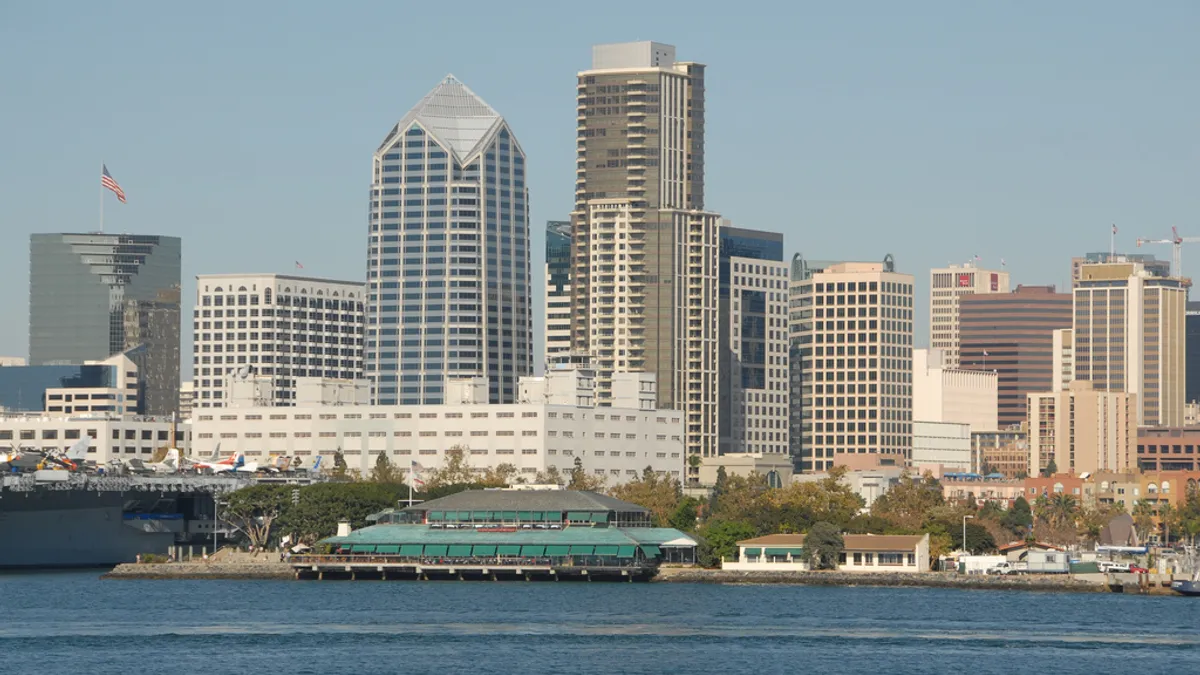Dive Brief:
- Increases in the cost of construction materials, especially for steel, have some in the San Diego building industry wondering if downtown has already seen the peak of its building boom come and go, according to The San Diego Union-Tribune.
- The Times-Union reported that steel prices are up 31% from the beginning of the year, a rise attributed to the implementation of President Donald Trump's tariffs (25%) on imported steel. Aluminum prices experienced a brief spike but have settled near January 2018 levels despite a 10% tariff. Developers are continuing work on major downtown projects, despite pricing headwinds that could total millions in additional costs, but some could reconsider future projects if material prices do not stabilize.
- There are also additional factors that could inhibit project development in downtown San Diego. They include a shortage of skilled workers, the cost of prevailing wage workers, a slowdown in apartment rental rate growth and an increase in prices for materials like lumber, also subject to tariffs. Current construction projects, however, should keep the city's industry busy before any potential pullback on the part of developers.
Dive Insight:
Builders and developers in most major metros experiencing a construction boom right now likely have the same concerns as those in San Diego as they fight through similar industry challenges.
A diminishing pipeline of skilled workers is probably the most urgent issue facing the construction industry, although most contractors are still finding enough workers to complete projects.
However, the struggle has revealed additional potential problems. For example, a survey conducted by USG Corp. and the U.S. Chamber of Commerce, as part of its Q3 2018 Commercial Construction Index report, found that 80% of respondents were either highly or moderately concerned about the safety risks resulting from a lack of skilled workers on their project sites.
Likely contributing to those numbers is the fact that many field construction positions require skills that can affect safety in the workplace. In a ranking of the most crucial current and future safety worries, 58% of respondents said they were most concerned about the current lack of skilled workers, and 62% said the situation would be a problem in the next three years.
To ease the burden of too-few skilled workers, construction companies have been exploring new approaches to traditional building. This includes offsite prefabrication and modular construction, which can turn the building process into something that resembles an assembly line, allowing contractors to take advantage of the same efficiencies. Some companies are also using technology such as virtual construction, BIM, drones, GPS, laser-guided equipment and 3D printing to fill in the gaps.













